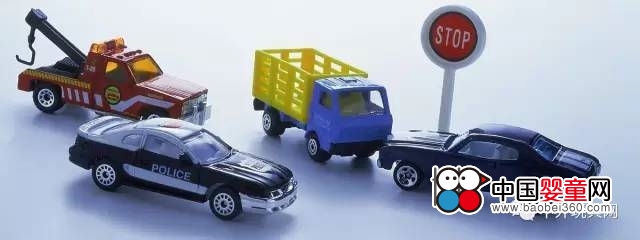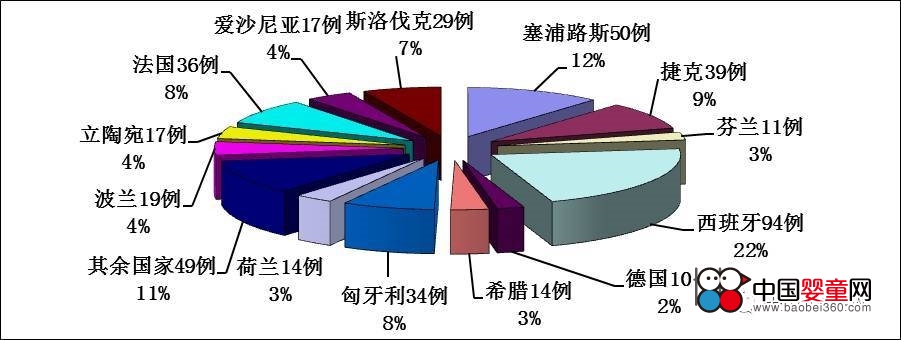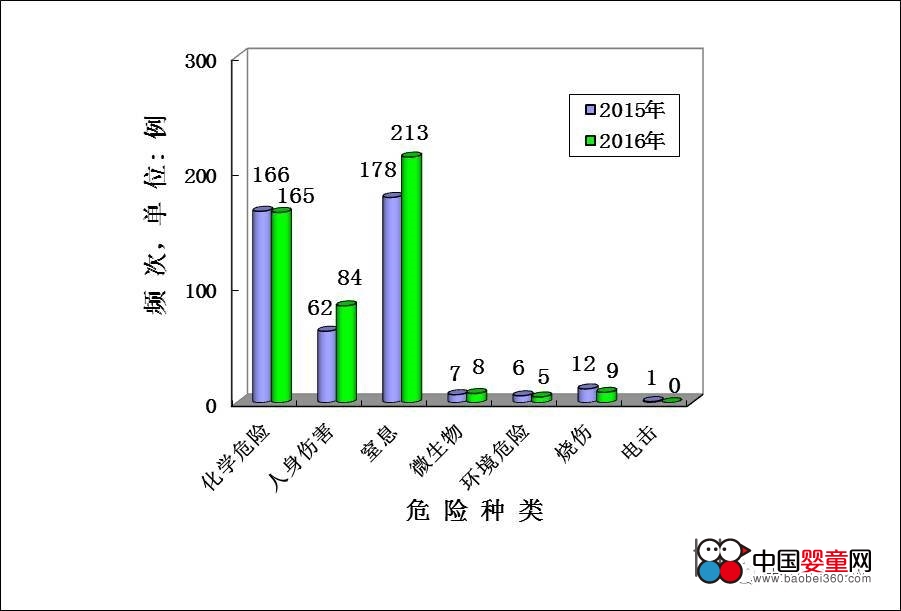The EU is the second largest export market for toys in China. Every year, China exports more than $3 billion worth of toys to the EU. However, frequent reports from the European Union (RAPEX) have brought huge economic losses to Chinese enterprises. This article plays an important role in the toy manufacturers to take measures to deal with export risks by reviewing and analyzing the situation of Chinese toys being notified by RAPEX last year.

Technical trade measures (referred to as technical and trade measures) are collectively referred to as technical regulations, standards, conformity assessment procedures governed by the Agreement on Technical Barriers to Trade of the World Trade Organization and food safety and animal and plant health measures under the Agreement on the Implementation of Sanitary and Phytosanitary Measures. . Technical and trade measures have become the most non-tariff measures that have the greatest impact on international trade. For China, from 2005 to 2014, an average of 32.6% of enterprises in China suffered from foreign trade and trade measures in export, resulting in direct losses of 552.88 billion US dollars. The trade and trade measures have become the second largest trade barrier for China's exports. .
China is the world's largest toy producer and exporter, with toy production accounting for more than 70% of global production. At the same time, toys have become an industry with a high proportion of industrial and trade measures in China's industrial sector. For example, in 2014, about 42% of China's toy and furniture export enterprises were affected by technical and trade measures.
In recent years, the EU has become the second largest export market for toys in China. China exports more than $3 billion worth of toys to the EU each year. With the increasingly stringent toy regulations and standards promulgated by the European Union, Chinese toys are frequently reported by the European Union's Rapid Alert System for Non-Food Consumer Goods (RAPEX), which brings huge economic losses to Chinese enterprises. By reviewing and analyzing the situation of Chinese toys being notified by RAPEX in 2016, it will play an important role in the toy manufacturers to take measures to deal with EU technical measures and avoid product export risks.
1. The overall situation of Chinese toys being notified by RAPEX
In 2016, RAPEX released 477 toy notifications, an increase of 5 compared with the 472 toy notifications in 2015, an increase of 1.06%. There were 433 toys involving China (only in mainland China, the same below), compared with 416 toy notifications in 2015, an increase of 17 cases, an increase of 4.09%.
In 2016, the number of notified toys in China accounted for 90.78% of the total number of RAPEX notified toys in the same period. This figure increased by 2.64 percentage points compared with 88.14% in 2015.
According to the above data, in 2016, among the RAPEX notification Chinese toys, the number of toys made in China ranked first. In 2016, the number of notified toys in China, both in quantity and in the total number of RAPEX notified toys, increased slightly year-on-year. It can be seen that the quality and safety situation of China's exports to the EU in 2016 has become severe to some extent compared with 2015.
Second, Chinese toys were analyzed by RAPEX
1. Notifying country analysis
In 2016, 25 RAPEX member states issued a circular on Chinese toys, covering almost all RAPEX member countries. Figure 1 shows the number of notified countries in China in 2016, the number of notifications, and the proportion.

Figure 1 Number of countries notified, announcements and proportions of Chinese toy announcements in 2016
It can be seen from Figure 1 that the top three countries in China for the number of notified announcements of Chinese toys in 2016 are: 94 cases in Spain, accounting for 21.71% of the total number of notified Chinese toys, about one-fifth; 50 cases in Cyprus, accounting for It is about 11.55%, about one-ninth; 39 cases in the Czech Republic, accounting for 9.0%, about one-tenth. The sum of the number of Chinese toys reported by the above three countries was 183, accounting for 42.26% of the total number of notified toys in China. In 2015, the number of countries that issued the top three notifications for Chinese toys was the same as in 2016, followed by Spain, Cyprus and the Czech Republic.
In 2016, compared with 2015, 13 RAPEX member countries reported that the number of Chinese toys decreased year-on-year. The countries with the largest decline in the number of notifications were Lithuania and Italy. In 2016, they reported that the number of Chinese toys decreased by 13 cases year-on-year. Followed by Germany, in 2016, Germany notified that the number of Chinese toys decreased by 6 cases year-on-year. In 2016, compared with 2015, 14 RAPEX member countries reported that the number of Chinese toys increased year-on-year. The countries with the largest increase in the number of notifications were Spain and Greece. In 2016, they reported that the number of Chinese toys increased by 14 cases compared with the same period of 2015. Followed by Cyprus, in 2016, Cyprus reported that the number of Chinese toys increased by 11 cases year-on-year. In 2016, compared with 2015, two RAPEX member countries reported that the number of Chinese toys was flat year-on-year. They are Sweden and Finland. Among them, in 2016 and 2015, Finland reported that the number of Chinese toys was 11 cases. In 2016 and 2015, Sweden reported that the number of Chinese toys was 5 cases.
2. Product analysis
In 2016, China's RAPEX-reported toys included plush toys, plastic toys, magnetic toys, wooden toys, and tow toys, which included almost all types of toys. Among them, 106 reported toys were doll toys, accounting for 24.48% of the total number of notified toys in China, accounting for about a quarter. Among the notified doll toys, especially plastic dolls are the most obvious, up to 95 cases.
3. Analysis of measures taken
The measures taken by RAPEX member countries in 2016 for Chinese toys are divided into voluntary measures (measures taken by operators to fulfill their legal obligations) and compulsory measures (official order measures). Table 1 shows the measures taken by the RAPEX member countries in 2016 for China's notified toys.
Table 1 Measures taken by RAPEX member countries in 2016 on China's notified toys

It can be seen from Table 1 that in 2016, RAPEX member states took 506 measures against Chinese toys, which is greater than the number of notified products. The reason is that some of the notified toys involve more than one type of hazard. Of the 506 measures, 367 were mandatory measures, accounting for 72.53% of the total number of measures. It can be seen that in 2016, the measures taken by China's notified toys by RAPEX member states were mainly based on official compulsory measures.
Among all the measures, the first one was forced release, 172, accounting for 33.99% of the total measures, about one-third. The second-ranked measure is mandatory for entry, 67, accounting for 13.24% of the total measures. The third-ranking measure was voluntary withdrawal, 62, accounting for 12.25% of the total measures. The sum of the above three measures is 301, accounting for 59.49% of the total measures.
Compared with 2015, the most increased measures taken by RAPEX member countries for Chinese toys were forced withdrawals, from 146 in 2015 to 172 in 2016, an increase of 26, an increase of 17.81%. The most common reduction was the mandatory ban on sales and other measures, from 70 in 2015 to 50 in 2016, a decrease of 20, a decrease of 28.57%.
4. Reason for notification
In 2016, China's notified toys involved six dangers including chemical hazards, personal injury, and suffocation. Figure 2 shows the risks and proportions of China's notified toys in 2016. Figure 3 shows the types of dangers and their quantities involved in China's notified toys in 2015 and 2016.

Figure 2 Dangers and proportions of China's notified toys in 2016
In 2016, the total number of dangerous toys involved in China's notified toys was 484, which was greater than the number of notified toys (433 cases). The reason is that some of the notified toys involve more than one type of danger. As can be seen from Figure 2, the first hazard category was asphyxiation, 213 cases, accounting for 44.01% of the total number of hazards. The second highest was chemical hazard, 165 cases, accounting for 34.09% of the total number of hazards. Personal injury, 84 cases, ranked third, accounting for 17.36%. The sum of the above three risks is 462 cases, accounting for 95.45% of the total number of risks.

Figure 3 Types of dangers and their quantities involved in China's notified toys in 2015 and 2016
As can be seen from Figure 3, there are four types of hazards in 2016, and their numbers have decreased year-on-year. The most common reduction was burns, a decrease of 3 cases compared with the same period of last year, and the rate of decline was 25%. There are three types of dangers in 2016, and their numbers have increased year-on-year. The most increase was asphyxiation, an increase of 35 cases year-on-year, with a growth rate of 19.66%. Followed by personal injury, an increase of 22 cases, a growth rate of 35.48%.
The number of chemical hazards has barely changed in 2016 compared to 2015, and they have fallen sharply compared to 2014. It can be seen that since the European Union implemented the new toy safety directive on July 20, 2013 and substantially strengthened the chemical safety requirements, after more than three years, domestic toy manufacturers have attached great importance to chemical hazards, and their chemical adaptation to the EU new toy safety directive. The ability is gradually strengthened.
The risk of suffocation in China's exports of EU toys in 2016 was mainly due to the fact that these toys did not meet the requirements of the Toy Safety Directive and the relevant European standard EN71-1. The main reason is that small parts on the toy (such as small whistle) or small parts (such as sound parts, small animal eyes, nose, battery) are easily torn, unscrewed, removed or unraveled by children, and may be mistaken by children. Caused by swallowing. There is also a risk of suffocation from the rupture of a toy. For example, a rattle can easily rupture to produce a small ball, and a child may put it in the mouth, posing a danger of paralysis. There is also a choking hazard due to the fact that the thinnest thickness of the toy plastic bag is lower than the prescribed or the drawstring on the toy is too long and is easily entangled in the child's neck.
The chemical risk of toys is mainly due to the fact that some toys do not meet the requirements of Section 8 of the REACH Regulation and Annex XVII "Restricted Substances". The main reason is that phthalates (DEHP, DBP, DINP, DNOP, DIBP) exceed the standard. Some toys have very high levels of phthalates, such as the doll's head containing 30.7% DEHP (by weight). Phthalates are commonly used as plasticizers for plastic toys. Plasticizers are similar to artificial hormones, which can harm male reproductive ability and promote female precocious puberty. Long-term intake can lead to liver cancer.
The main cause of personal injury to toys is that some toys do not meet the requirements of the Toy Safety Directive and the relevant European standard EN71-1. The main reasons are as follows: First, the toy volume is too high, which can cause hearing damage, such as the peak of the ringing level is too high; second, toys (such as wooden shotguns, bow and arrow kits, etc.) are too high, which may cause harm to the body; Yes, the toy is too sharp or easy to fall apart or break, which may cause children to cut. Fourth, small magnets with high magnetic flux in the toy are easy to fall off. If a child swallows more than two magnets, the magnets will attract each other, causing perforation or blockage of the intestines. The fifth is the pinch, falls, etc. caused by insufficient toy safety. For example, in a toy scooter, when the child is riding, the steering tube is liable to collapse, causing the child to fall and be injured.
Toys that pose a burn hazard come from masquerade supplies such as wigs, hats, and clothing. The reason is that these products are highly flammable and can cause burns.
Toys that pose microbial risk are mainly from soap bubbles because they contain excessive amounts of pathogenic microorganisms such as Pseudomonas, Pseudomonas aeruginosa, mold and aerobic mesophilic bacteria. If these contaminated fluids are in direct contact with the child's mouth, hands and eyes, it may cause infection in children.
Toy products that generate environmental risks are mainly toy stickers and the like. The reason is that the sticker plastic material contains short-chained chlorinated paraffin (SCCP). SCCP will persist in the environment, and low concentrations will be toxic to aquatic organisms, may accumulate in wildlife and humans, pose a risk to human health and the environment, and do not comply with POP regulations (regulations on persistent biological pollutants).
3. Recommendations for toy companies to respond to EU technical trade measures
In 2016, the General Administration of Quality Supervision, Inspection and Quarantine and the General Administration of Customs jointly issued Announcement No. 81. Since September 1, 2016, the statutory inspection of export of toy products has been cancelled. As a result, exports of EU toys no longer need to be reported to the inspection and quarantine department. Under this circumstance, export toy enterprises should enhance their initiative to assume the responsibility of quality and safety, and take a number of measures to actively respond to EU technical and trade measures.
1. On the one hand, enterprises should pay attention to collecting and learning the technical regulations and standards related to toys issued by the European Union. For example, learn the latest information on EU toy technology measures, and focus on strengthening the study and study of the EU New Toy Safety Directive and REACH. On the other hand, companies need to make full use of the technology and trade measures to overcome the effects, through technological innovation and quality. Innovate, transform and upgrade products, cultivate independent brands, and crack the EU technical trade barriers.
2. Export toy companies should firmly establish risk awareness. Through risk analysis, it is found that whether in 2015 or 2016, the biggest risk country for Chinese toy exports to the EU is Spain. According to Spain's Ouhua.com, as the proportion of Chinese toys in the Spanish market has increased significantly, in recent years, Spanish toys have been mainly concentrated on Chinese toys and Chinese businesses. The specific meaning of this is very obvious. This phenomenon deserves the attention of toy companies. The most important risk items are chemical hazards and suffocation hazards, especially the plasticizers represented by DEHP. Corresponding toy manufacturers should establish risk awareness and do a good job in early warning.
3. Toy companies must establish a safety-based concept in the product design phase. Whether it is a toy designed by the company or a toy processed by a foreign customer, the company can evaluate the safety of the toy sample through the third-party testing agency or the toy laboratory of the inspection and quarantine department before production to see if its safety is in line with the EU. standard. In the event of non-compliance, modify the toy design in a timely manner.
4. Qualified raw materials are an important factor in ensuring the safety of toys. Enterprises should attach great importance to the quality of raw materials. Companies are advised to develop strict qualified suppliers and raw material acceptance systems. On the one hand, it is necessary to strengthen the procurement of raw materials, especially the control of key risk projects. On the other hand, for qualified enterprises, they are encouraged to establish laboratories and improve their ability to self-check and control raw materials. In particular, it improves the detection capacity of DEHP, DBP, DINP and DNOP in plastics to avoid the problem of excessive plasticizers. For enterprises with no conditions, it is recommended that they use third-party testing power to test key raw materials to ensure the quality and safety of raw materials. They must not be lucky enough to put the raw materials into production without being tested, resulting in small losses.
5. Enterprises strengthen the quality management of the toy production process. If the product is assembled, tighten small parts such as screws on the toy. Plush toys should pay attention to the stitching strength, so that children can easily pull off small parts such as eyes and nose or pull open the plush toys and touch the filling material.
Children Bed,Children Hospital Bed,Children Healthcare Bed,Children Medical Bed
Jiangmen Jia Mei Medical Products Co.,Ltd. , https://www.jmmedicalsupplier.com